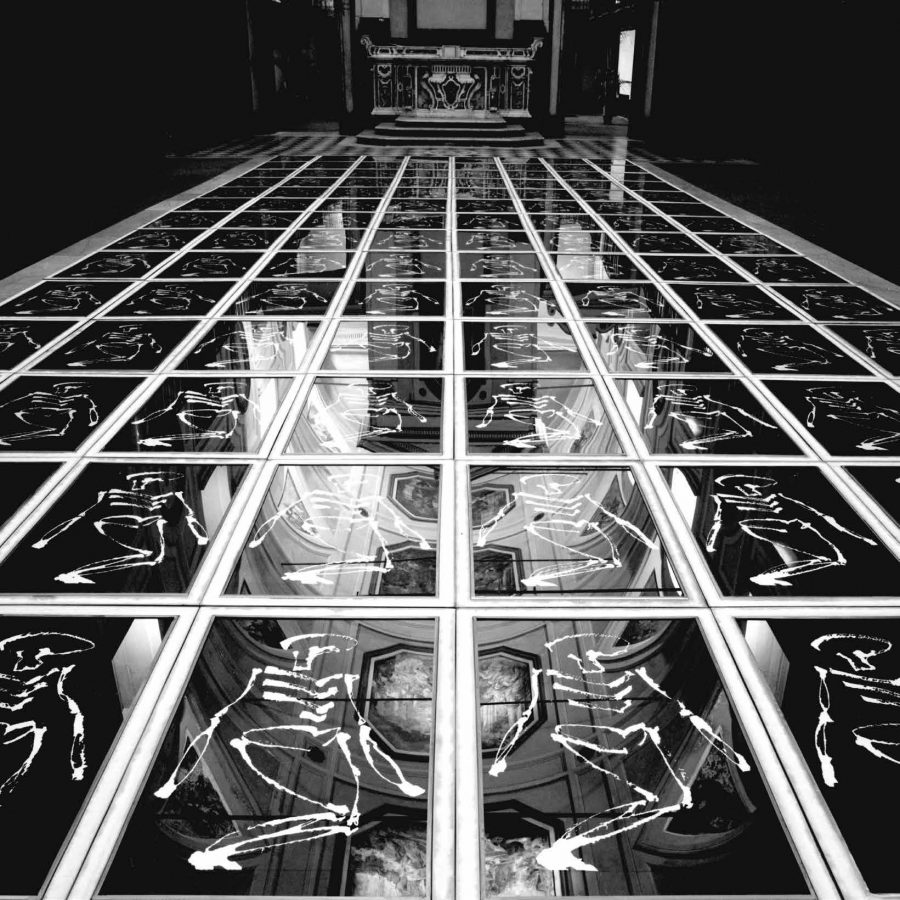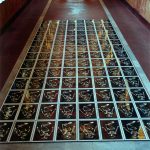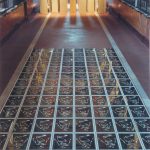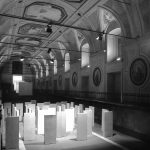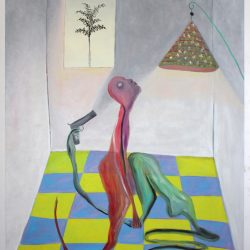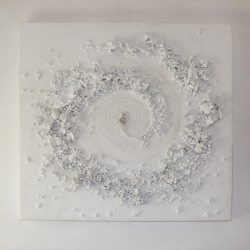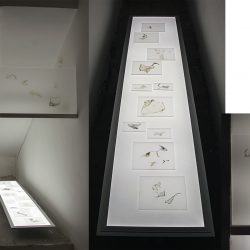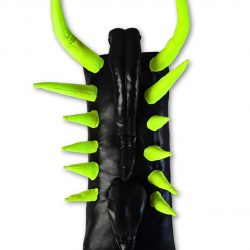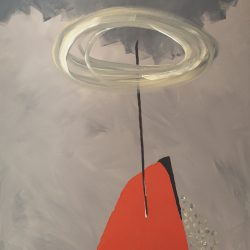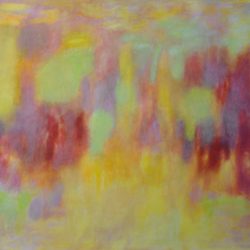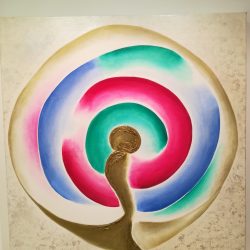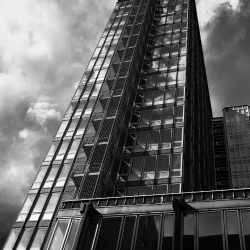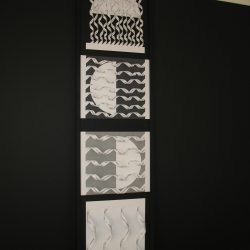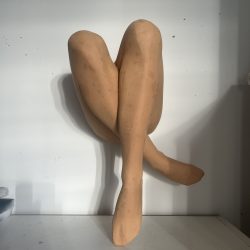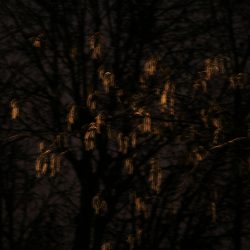work
medium
| category | Installation |
| subject | Abstract, Architecture |
| tags | oilpaintings, astratto, leduc, installazione, sala lazzaretto |
| base | 100 cm |
| height | 70 cm |
| depth | 2 cm |
| year | 1997 |
Medium by Pierre-Yves Le Duc is an “Itinerarium mentis ad
Deum” (“Journey of the Mind into God”). The work seems
almost ingenuous, with only its purity as a defense. In these
times governed by a rampant and paradigmatic complexity,
medium surprises us for a simplicity that develops in a single
direction wherefrom there is no coming back. A reading that
is structured in stages will thus prove useful. According to our
own decision we shall name Origo, Labyrinthus and Exitus
the three stages it is composed of. The global movement the
installation expresses is described by a well-oriented and
rectilinear vector in which an upward thrust grows and reaches
its apex. It does not appear to be an invitation, no more than a
confession does.
Origo – the birth – is described by a horizontal wall of
skeletons. The white of the bones soon reveals itself to be
a void, a series of voiceless mouths gaping in the silence
of blackness. The emergence of images and meanings in
between the ribs does not seem to be dissimilar from the
sense degeneration of their decomposition, resembling a
vulgar osteoporosis of the soul. Before these faces and bodies
one expects a gloomy meditation on the vanity of appearances
both for oneself and for the world, as far as reaching contempt
and pity.
In the midst of medium the installation becomes vertical;
Labyrinthus, which occupies the neutral colored area between
the prevailingly black Origo and the white Exitus, presents
itself not simply as the customary metaphor of self-loss but
as the expression of self-finding. The androgynous character
of the constituent parts is asymmetrical. In other words the
atemporal role of the passage and the cavern are proper to
the female, but it is the overly mortal male that a destiny of
a merely external nature falls upon. The overall structure is
that of a sacred square that is made up of four Pythagorean
tetrahedra. In this intermediate position Labyrinthus reveals
the torment of ascesis but conceals the key feature of the only
way out, that is to say the leap.
Exitus is a crescendo of light into which we can imagine any
residual trace of the body to vanish. The bond with the earth
loosens progressively, and words themselves have little
to describe. We are before the ineffable. Like all Platonists
Le Duc is in love with the beauty of truth and is incessantly
seduced by the beauty of appearance, up to the point of
obsession.
Fundamentally, the difference between the seducer and
the mystic lies exclusively in patience, in the degree of
obstination.
Lorenzo Cuna
12 oil paintings
(réserve) on handmade
Fabriano paper
(0.69 pounds – 315g
per sq. m.s; 20.05 by
29.92 inch – 56 by 76
cm), with iron and wax
frames and covered with
glass (27.56 by 39.37
inch – 70 by 100 cm),
arranged horizontally on
the ground (45.93 feet
by18.37 feet – 14 by 5,6
m);
41 structures
in hempen cloth
(mattress covers of the
1950’s from a disused
hospital) held by internal
wood frames (6.69 by
30.32 by 77.56 inch
– 17 by 77 by 97 cm).
Prepared with marble
powder and drawn in
pencil, they stand on four
Pythagorean tetrahedra;
4 oil canvases
prepared with glass
powder, covered with
transparent linen (102.36
by 102.36 inch – 260 by
260 cm ), and hung with
steel cables;
a sound accompaniment
is provided by the
recording of the
humming produced by an
industrial refrigerator.
Deum” (“Journey of the Mind into God”). The work seems
almost ingenuous, with only its purity as a defense. In these
times governed by a rampant and paradigmatic complexity,
medium surprises us for a simplicity that develops in a single
direction wherefrom there is no coming back. A reading that
is structured in stages will thus prove useful. According to our
own decision we shall name Origo, Labyrinthus and Exitus
the three stages it is composed of. The global movement the
installation expresses is described by a well-oriented and
rectilinear vector in which an upward thrust grows and reaches
its apex. It does not appear to be an invitation, no more than a
confession does.
Origo – the birth – is described by a horizontal wall of
skeletons. The white of the bones soon reveals itself to be
a void, a series of voiceless mouths gaping in the silence
of blackness. The emergence of images and meanings in
between the ribs does not seem to be dissimilar from the
sense degeneration of their decomposition, resembling a
vulgar osteoporosis of the soul. Before these faces and bodies
one expects a gloomy meditation on the vanity of appearances
both for oneself and for the world, as far as reaching contempt
and pity.
In the midst of medium the installation becomes vertical;
Labyrinthus, which occupies the neutral colored area between
the prevailingly black Origo and the white Exitus, presents
itself not simply as the customary metaphor of self-loss but
as the expression of self-finding. The androgynous character
of the constituent parts is asymmetrical. In other words the
atemporal role of the passage and the cavern are proper to
the female, but it is the overly mortal male that a destiny of
a merely external nature falls upon. The overall structure is
that of a sacred square that is made up of four Pythagorean
tetrahedra. In this intermediate position Labyrinthus reveals
the torment of ascesis but conceals the key feature of the only
way out, that is to say the leap.
Exitus is a crescendo of light into which we can imagine any
residual trace of the body to vanish. The bond with the earth
loosens progressively, and words themselves have little
to describe. We are before the ineffable. Like all Platonists
Le Duc is in love with the beauty of truth and is incessantly
seduced by the beauty of appearance, up to the point of
obsession.
Fundamentally, the difference between the seducer and
the mystic lies exclusively in patience, in the degree of
obstination.
Lorenzo Cuna
12 oil paintings
(réserve) on handmade
Fabriano paper
(0.69 pounds – 315g
per sq. m.s; 20.05 by
29.92 inch – 56 by 76
cm), with iron and wax
frames and covered with
glass (27.56 by 39.37
inch – 70 by 100 cm),
arranged horizontally on
the ground (45.93 feet
by18.37 feet – 14 by 5,6
m);
41 structures
in hempen cloth
(mattress covers of the
1950’s from a disused
hospital) held by internal
wood frames (6.69 by
30.32 by 77.56 inch
– 17 by 77 by 97 cm).
Prepared with marble
powder and drawn in
pencil, they stand on four
Pythagorean tetrahedra;
4 oil canvases
prepared with glass
powder, covered with
transparent linen (102.36
by 102.36 inch – 260 by
260 cm ), and hung with
steel cables;
a sound accompaniment
is provided by the
recording of the
humming produced by an
industrial refrigerator.



